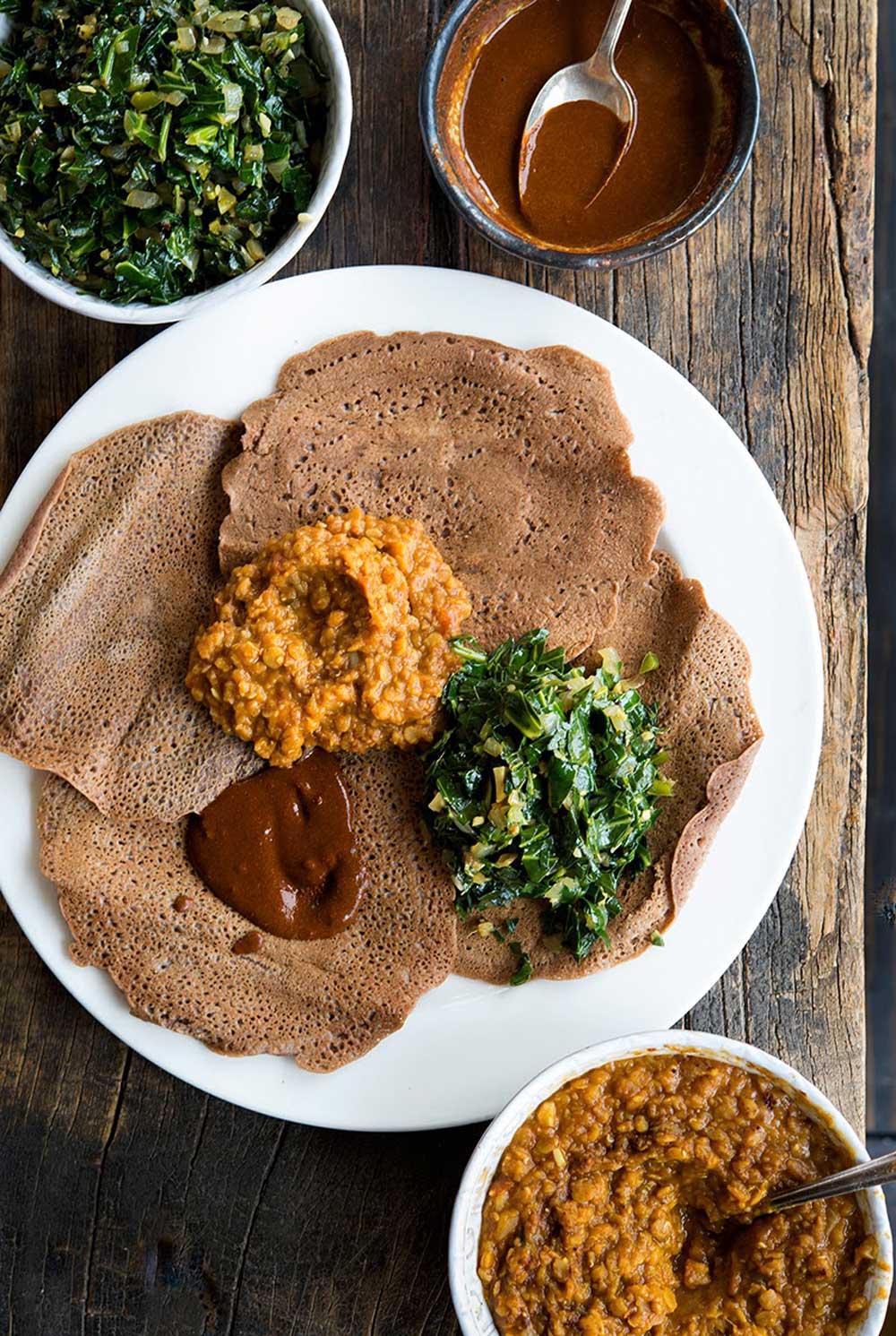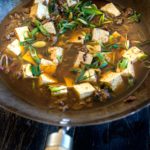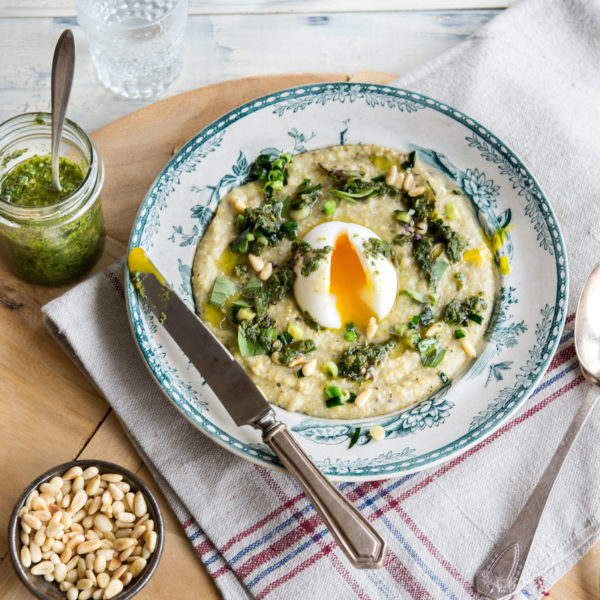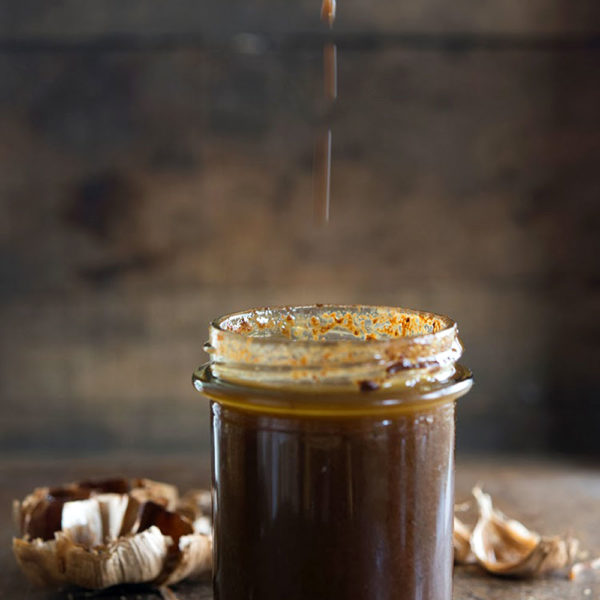I have a habit of going overboard. Time and time again, I tell myself, I’m going to scale back, just make one thing today. But, before I know it, I’m at the grocery store with a basket full of ingredients. Shortly thereafter, the kitchen (or the minuscule 7.5-foot long space that is my kitchen) is a complete disaster, with a small mountain of pots and pans, bowls and plates scattered about (and, uhh, no counter space to put them on). Good thing there are no behind the scenes photos (lets just say ‘scary’).
This post started out about Ethiopian spiced butter, also known as nit’ir qibe. A wonderfully delicious, aromatic, clarified butter, infused with a slew of spices, along with onion, garlic, and ginger. It’s beautiful and simple, and bursting with flavor. It’s the foundation of many Ethiopian dishes.
But I couldn’t just leave you hanging there, could I? You want to know, what shall I do with this oh so fragrant butter?? What dishes does one prepare??
And so that’s how nit’ir qibe turned into gomen (Ethiopian braised collard greens), turned into misir wot (Ethiopian spiced red lentils) — two of my favorite Ethiopian vegetarian sides.
Oh, and homemade injera (the spongy Ethiopian bread made from teff flour), because you need something to serve these dishes on, to soak up all those wonderful flavors. And, you can’t have a proper Ethiopian meal without a side of awaze (the spicy condiment made from berbere).
Next will have to tackle some of my favorite Ethiopian meat (lamb) dishes — like Yebeg Wat. Best left for another day.
Before I go any further, I must mention a bit on berbere. It’s the key spice mixture in Ethiopian cooking. I get it from a local Ethiopian store/restaurant. It’s a complex blend of chile peppers, garlic, ginger, dried basil, fenugreek, and less familiar herbs/spices such as ajwan and nigella seeds. There’s really no substitute, as it’s flavor is distinct. If you can’t find it locally, you can order some from places like this. Not surprisingly, there are several recipes floating around the web to make your own berbere spice blend, like this one and this one.
I always find Ethiopian food to be comforting, deeply satisfying. It’s what I crave, especially on a cold winter’s night.
It’s communal. It’s festive. Everyone eats from the same plate. So, dig in, don’t be shy.
From left to right — ginger root, dried basil, nigella seeds, cardamom seeds, fenugreek seeds, turmeric, cinnamon stick — all simmered in butter over very low heat for at least a half hour (but keep a close eye, make sure it doesn’t burn).
A bit on Injera…
Injera is a sour, spongy (crepe-like) bread, traditionally made from teff, which just so happens to be the world’s smallest grain. You serve the meal directly on the injera, which soaks up the juices and flavors. Simply tear off a small piece of injera and use it as a vehicle to scoop up your food.
My injera was simply made with 100% teff flour, sourdough starter, water, salt, and baking soda. Maybe not the traditional method, but the injera tasted spongy and sour, just like what I’ve had out.
To make the injera, ladle some batter into a skillet and swirl, like you would a crepe, until thin. I don’t have a proper crepe pan, so I first tried to make them in a non-stick skillet (and they stuck, go figure). So I switched over to my cast-iron skillet, and bingo, worked perfectly. But, thinking that I might need to order one of these.
I’ll let you in on a little secret…
Most Ethiopian restaurants serve a version of injera that’s made from whole wheat flour instead of teff. But, they often serve ‘black injera’ made from 100% teff flour. You just need to call ahead and reserve (at least that’s been my experience).
I find the same thing at many Asian restaurants. They often have a “secret” menu on which you’ll find authentic dishes, instead of the default “Americanized” menu you usually get. You just need to ask for it.
Gomen = fragrant collard greens cooked with Nit’ir Qibe (the Ethiopian spiced butter flavored with cardamom, fenugreek, nigella seeds, etc.).
Nit’ir Qibe (Ethiopian-Spiced Butter)
1 pound (4 sticks) butter, cubed
4-6 garlic cloves, chopped
2 shallots or 1 small onion, chopped
1 (2-inch) piece of ginger, finely chopped
1 1/2 teaspoons dried basil
1 teaspoon cardamom seeds, from whole black cardamom pods
1 teaspoon fenugreek seeds
1/2 teaspoon nigella seeds
1/2 teaspoon turmeric powder
1 cinnamon stick
Toast the cardamom seeds, cinnamon, and fenugreek seeds in a small cast iron skillet for a minute or two, until fragrant.
Combine all the ingredients in a pot and turn the heat to low. Let it come to a bare simmer. Continue to simmer for at least 30 minutes. Keep an eye on it and make sure it doesn’t burn.
Strain with cheesecloth or a fine mesh sieve.
Note: Will keep for several weeks in the refrigerator and several months in the freezer.
Misir Wot (Ethipoian Red Lentil Stew)
3 to 4 tablespoons nit’ir qibe
1 small-to-medium onion, diced
4 garlic cloves, minced
1 tablespoon, freshly grated ginger
1 1/2 cups red lentils, rinsed under cold water
3 cups water
1 to 2 berbere (depending on how spicy you like it)
1/2 cup crushed canned tomatoes or 2 small tomatoes, chopped
sea salt to taste
Heat the butter in a pot over medium heat. Add the onions and cook, stirring occasionally, until golden brown, about 8-10 minutes. Add the garlic and ginger and cook another minute or two. Add the red lentils, water, berbere, and tomatoes. Bring to a boil, then reduce to a simmer, stirring occasionally, until the lentils are thick and tender, about 40-45 minutes, adding a little more water if needed. Season with salt.
Gomen
2 tablespoons Nit’ir Qibe/Ethiopian-spiced butter (recipe above)
2 shallots or 1 small onion, chopped
3-4 garlic cloves, minced
2 to 4 Thai chiles, minced (2 for mild; 4 for medium heat)
1 1-inch piece ginger, peeled and grated
1 1⁄2 pounds collard greens, stemmed and cut crosswise into 1⁄4-inch strips
Sea salt and fresh ground black pepper, to taste
Heat the nit’ir qibe in a large skillet over medium-high heat. Add the onions and sauté for 8-10 minutes until golden brown. Add the garlic, chile and ginger, and continue cooking for another minute or two. Add the chopped collard greens, salt and pepper and 1/2 cup of water. Stir to combine. Cover and cook until the collards are wilted and tender, and all the water is absorbed, about 5 minutes.
Injera
Adapted from Wild Fermentation by Sandor Katz
makes ~ 1 dozen (6 to 61/2-inch) injera
2 cups teff flour
1 cup sourdough starter
2 1/2 cups spring water
1/2 teaspoon salt
1/2 teaspoon baking soda
olive oil for greasing the pan
In a large bowl, mix the teff flour, sourdough starter, and water together. Cover with a towel and let sit at room temperature for 24 hours. Add the salt and baking soda.
Lightly oil and heat a large cast-iron skillet (or crepe-pan) over medium heat. When hot, ladle 1/4 to 1/3 cup of batter into the skillet. Swirl the pan to evenly distribute the batter into a thin layer. Small bubbles will start to form. When the top is cooked through, the injera is done (only cook on one side). Stack or roll the injera and cover with a towel. Repeat with the remaining batter.
Note: I first used a non-stick pan and the injera completely stuck. When I switched to the cast-iron (Lodge cast-iron skillet), it worked perfectly.
Awaze
Recipe from our friend Ashi from [the former] Queen of Sheba Cafe in Chicago
3 tablespoons berbere
1 1/2 tablespoons water
1 1/2 tablespoons red wine
1 tablespoon lime juice
pinch of sea salt
Add all ingredients to a small bowl and mix well. Should be the consistency of a thin ketchup. If too thick, add a bit more water.
Note: Serve with plenty of awaze and injera.
When tomatoes are in season, I would also prepare a simple tomato-cucumber salad (with sliced jalapenos), to add a fresh component to the meal.

















8 comments
Nhiro
Amazing. Can't wait to see your other Ethiopian recipes (hoping for doro wat!)
afracooking
Haha, this post sounded scarily familiar: I remember only having the intention of posting a kibe recipe (which I never got round to because) I ended up sharing my recipes for injera, gommen etc etc.
I really find you injera recipe very facinating – I have never ever made it any other way than with fresh yeast and letting it sit for days. This really sounds like an interesting quick fix!
afracooking
Haha, this post sounded scarily familiar: I remember only having the intention of posting a kibe recipe (which I never got round to because) I ended up sharing my recipes for injera, gommen etc etc.
I really find you injera recipe very facinating – I have never ever made it any other way than with fresh yeast and letting it sit for days. This really sounds like an interesting quick fix!
Sue/the view from great island
This is fascinating — and your photos are just wonderful. I'm new to your blog, and can't wait to explore. I love exotic recipes, and this bread is one I've always wanted to try, thanks!
Sue/the view from great island
This is fascinating — and your photos are just wonderful. I'm new to your blog, and can't wait to explore. I love exotic recipes, and this bread is one I've always wanted to try, thanks!
tori
You forgot the recipe for Gomen and put the butter recipe twice : (
wildgreensandsardines@gmail.com
Thanks Tori. Not sure how that happened? I fixed it.